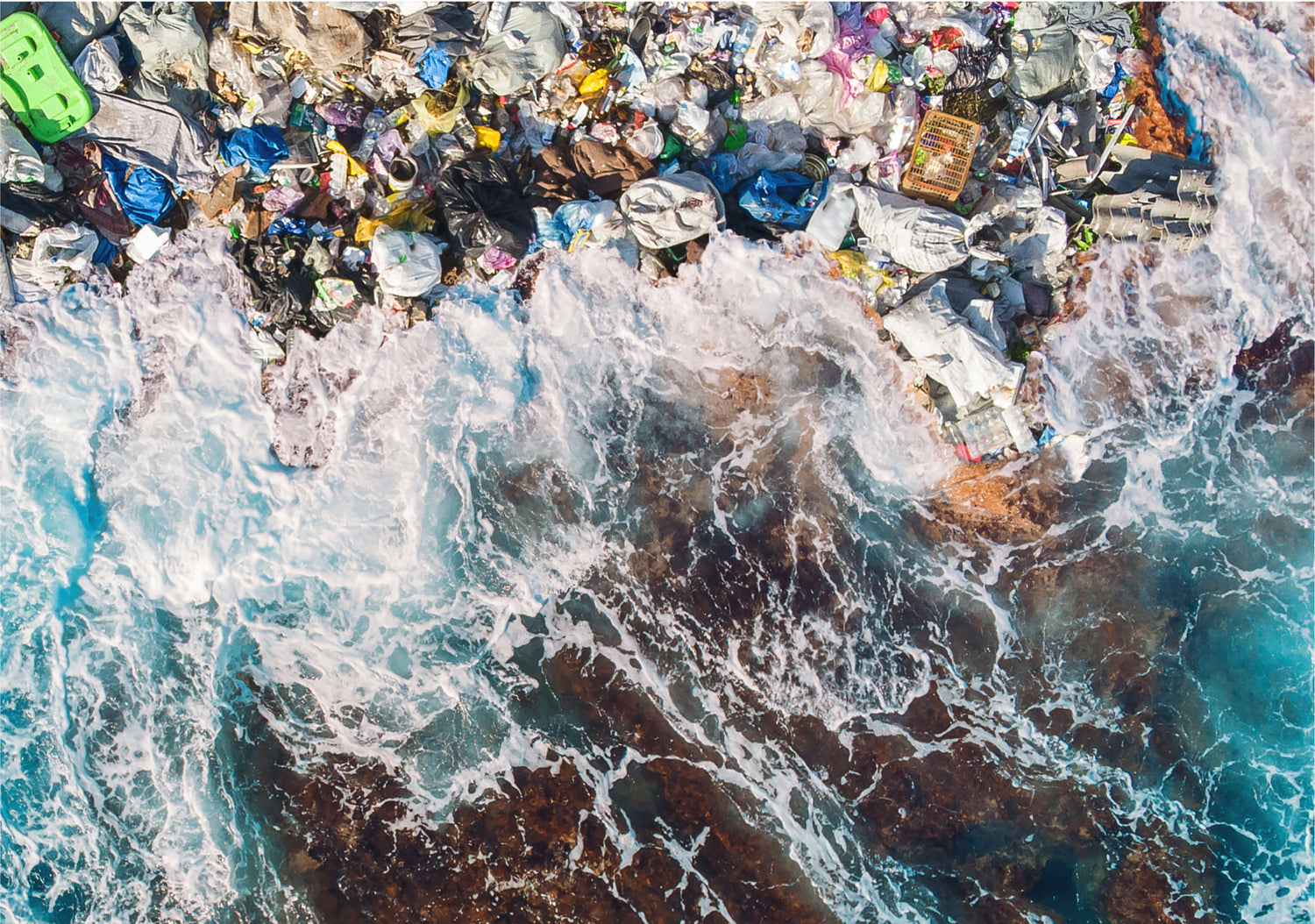This article was written in cooperation with the German Ocean Foundation:
Anyone who enjoys walking on the beach, surfing, sailing, or diving is familiar with it: the plastic tide in our oceans. Scientists estimate that by 2050, there could be more plastic in the world's oceans than fish. This is a dramatic forecast for an ecosystem that provides us with oxygen, food, medicine, and a high level of recreation. But where does this plastic come from? How does it get into the seas? How long does it stay there? And what damage does it cause?
In 2020, 367 million tons of plastic were produced worldwide, and this number is increasing. Thirty-three percent of plastic is discarded after a single use. Only about 3 to 10 percent of the globally collected plastic is recycled. It is estimated that over 100,000 marine mammals and millions of seabirds and fish die each year because they ingest plastic parts or become entangled in them. So how does so much plastic end up in our oceans?
Through Rivers
Most of the trash that ends up in the sea comes from the land. Estimates suggest 80 percent. Often, trash is collected in landfills or simply dumped somewhere. When these sites are near bodies of water like rivers or the sea, plastic waste is easily blown into the water by the wind or washed in by rain or flooding. Plastics also enter our rivers through wastewater from industrial and sewage treatment plants. Microplastics, particles smaller than five millimeters, are generated, for example, by washing synthetic textiles, tire abrasion on roads, or using cosmetic products with glitter or exfoliating components.
Through Shipping
Although the dumping of (plastic) waste into the sea is legally prohibited, enforcement is limited, especially on the high seas. Besides intentional waste disposal, ships often lose cargo and entire containers. There are significant regional differences in the amount of waste entering the sea. The German Environment Agency believes that in highly trafficked areas like the southern North Sea and the East Asian seas, fishing and shipping are the main sources of marine debris.
Illegal Export and Unregulated Landfills
Unfortunately, a significant portion of Europe's plastic waste is still illegally exported, often to countries in the Global South, through waste management loopholes. There, it ends up in coastal unregulated landfills, from where it can be washed into the sea.

Through Fishing
Industrial fishing is another major contributor to marine waste. Nets, lines, buoys, rubber boots, and other gear are either accidentally lost or deliberately dumped into the sea. Fishing nets, predominantly made of plastic, constitute up to ten percent of the ocean's waste. These "ghost nets" continue to catch fish, which then attract marine mammals, sharks, or turtles that get entangled and either drown or starve.
What Happens to Plastic in the Sea?
Plastic is highly durable and can persist in the sea for hundreds of years. It breaks down extremely slowly, causing the oceanic garbage dump to grow steadily. Large concentrations of plastic accumulate in five massive and several smaller garbage patches in the Atlantic, Pacific, and Indian Oceans, driven by ocean currents. These currents not only gather large amounts of plastic in certain areas but also distribute it to the most remote corners of the globe. The Great Pacific Garbage Patch in the North Pacific now covers an area four and a half times the size of Germany. These patches primarily contain large plastic items, such as entire plastic bottles, large tarps, agricultural films, or fishing nets.
This situation threatens marine animals that ingest or become entangled in plastic and entire ecosystems like coral reefs, which can no longer receive enough light due to entangled plastic to produce oxygen. Mangroves, often found near river mouths, are particularly affected. Their roots trap plastic debris transported by water, harming plant health and thus the nursery habitats of many animals and coastal protection.
Solutions
Efforts are being made to regulate plastic consumption, such as banning single-use plastic items. Recycling options are improving, and public awareness of waste separation is increasing in many countries. However, this alone will not solve the problem—quite the opposite. The trade in plastic waste remains lucrative, with a significant portion of our barely recyclable plastic waste still being exported, mainly to Southeast Asia. These countries often lack adequate waste disposal and recycling systems, resulting in much of the plastic waste ending up in the environment and the ocean.
Numerous initiatives and technologies are working to remove trash from the ocean and the environment. These range from small organizations collecting litter along riverbanks to prevent it from reaching the sea, to divers clearing ghost nets from the oceans, to futuristic trash-collecting ships or devices that fish plastic out of river mouths before it reaches the ocean. All these efforts raise public awareness of the problem and contribute to combating plastic pollution. The ultimate goal should always be to prevent plastic from entering the environment in the first place. This means questioning and significantly reducing our consumption and production of plastics. We must also establish waste management structures in heavily polluted countries and regulate recycling systems to prevent plastic from entering the environment. Reusable systems should take precedence over disposable ones. Plastic manufacturers should bear the responsibility for health, environmental, and climate damage caused by their products. Adding microplastics to products should be banned, knowing that they will enter the environment through use. The same applies to harmful substances in plastic production. A global approach, similar to climate protection, in the form of an international agreement to reduce plastic pollution would be desirable—after all, the sea knows no borders and belongs to all of us.











